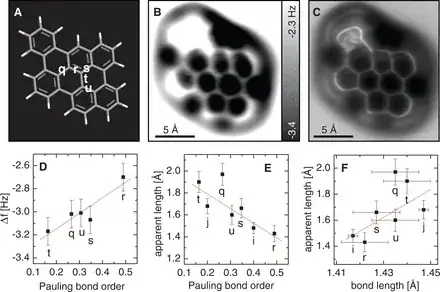Question: Why does the uncertainty principle allow probing of characteristics specific to the electron orbital distribution? If you measure an electron's position/momentum, then after you measure it, it is obviously no longer in that exact same orbital. What's going on?
Recently, a new AFM technique has allowed researchers to distinguish between different types of chemical bonds (paper link). The published results clearly distinguishes information about bonding electrons (specific to benzene structures).

What does quantum mechanics state about variability of measurement of electrons in coherent states? Must the orbitals be excited to get information about it? Do they then give off an emission in order to return to the ground state? If the electrons aren't actively disturbed in these processes, wouldn't that be a blatant violation of the uncertainty principle? What are the statistical limitations of getting information about an electron orbital? Theoretically, could you experimentally map the exact 3D wave function of an orbital?
I want this question to be agnostic to the method like AFM, although AFM seems particularly confusing to me. As I understand the idea, it moves a tip along a surface and detects slight movement as it moves over humps. You can imagine a single electron orbital as a hump and the probe moving over it continuously being pushed up or down due to the electrostatic attraction or repulsion. But this is clearly wrong! Such a process couldn't be smooth.